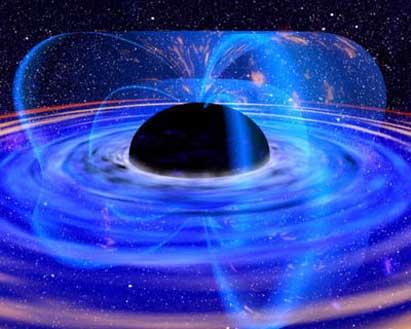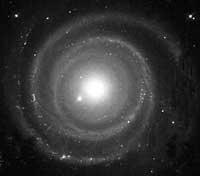Black holes, more surprising when meeting them
2001/10/23 Elhuyar Zientzia

Nothing can escape from black holes, nor is light said many times; the gravitational force of black holes is so great that they swallow everything. But this statement is not entirely accurate. X-rays are emitted by the limits of the black holes. Before the ingestion of the black holes, the dust and gas accumulated around them turn forming rotating discs faster and, due to friction, emit X-rays.
The XMM-Newton space telescope analyzed the spiral galaxy MC-6-30-15 in June 2000. This galaxy is located 100 million light years and has a black hole. The data obtained have shown that the black hole emits energy. "The XMM-Newton telescope shows us an unseen phenomenon," said Jörn Wilms, head of the research.
The EPIC camera of the telescope collects spectra of the elements of the discs and, in the case of the galaxy MC-6-30-15, the iron signal is more intense than normal. The same phenomenon was detected in 1995, but not so clearly. The iron signal comes from the inner discs, that is, from the discs closest to the black hole. Astronomers are clear that from the beginning something is happening that feeds energy to iron atoms, but what?
After many mathematics, astronomers have postulated as the hole rotates and addressed a theory 25 years ago to explain the phenomenon. Roger Blandorf and Roman Znaje suggest astronomers that a black hole can emit energy when it rotates on itself and a magnetic field makes it brake effect. The emitted energy would be absorbed by gases from the environment, such as iron atoms.
If the theory was proven, the living spectrum of iron would be clarified, but something else: that black holes, in addition to absorbing energy, have the capacity to emit energy.

Gai honi buruzko eduki gehiago
Elhuyarrek garatutako teknologia





